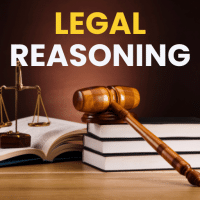CLAT Exam > CLAT Questions > Percentage of carbon in steel ranges from &nd...
Start Learning for Free
Percentage of carbon in steel ranges from –
- a)0.1 to 1.5
- b)1.5 to 3.0
- c)3.0 to 4.0
- d)4.0 to 6.0
Correct answer is option 'A'. Can you explain this answer?
Most Upvoted Answer
Percentage of carbon in steel ranges from –a)0.1 to 1.5 b)1.5 to...
Steel is an alloy made by combining iron and other elements, the most common of these being carbon. When carbon is used, its content in the steel is between 0.2% and 2. 1% by weight, depending on the grade. Other alloying elements sometimes used are manganese, chromium, vanadium and tungsten.
Free Test
FREE
| Start Free Test |
Community Answer
Percentage of carbon in steel ranges from –a)0.1 to 1.5 b)1.5 to...
Percentage of Carbon in Steel
Steel is an alloy of iron and carbon, where the percentage of carbon in steel determines its properties and characteristics. The percentage of carbon in steel typically ranges from 0.1% to 1.5%, with different levels of carbon corresponding to different types of steel.
Explanation:
- Low Carbon Steel: Steel with a carbon content ranging from 0.1% to 0.3% is classified as low carbon steel. This type of steel is easy to form and shape, making it suitable for applications such as automotive body panels and wire.
- Medium Carbon Steel: Steel with a carbon content between 0.3% and 0.6% falls into the category of medium carbon steel. This type of steel offers a balance of strength and ductility and is commonly used in construction and machinery.
- High Carbon Steel: Steel with a carbon content ranging from 0.6% to 1.5% is classified as high carbon steel. This type of steel is known for its hardness and wear resistance, making it suitable for applications such as cutting tools and springs.
By controlling the percentage of carbon in steel, manufacturers can tailor the properties of the steel to meet specific requirements for different applications. The range of 0.1% to 1.5% covers the most common types of carbon steel used in various industries.
Steel is an alloy of iron and carbon, where the percentage of carbon in steel determines its properties and characteristics. The percentage of carbon in steel typically ranges from 0.1% to 1.5%, with different levels of carbon corresponding to different types of steel.
Explanation:
- Low Carbon Steel: Steel with a carbon content ranging from 0.1% to 0.3% is classified as low carbon steel. This type of steel is easy to form and shape, making it suitable for applications such as automotive body panels and wire.
- Medium Carbon Steel: Steel with a carbon content between 0.3% and 0.6% falls into the category of medium carbon steel. This type of steel offers a balance of strength and ductility and is commonly used in construction and machinery.
- High Carbon Steel: Steel with a carbon content ranging from 0.6% to 1.5% is classified as high carbon steel. This type of steel is known for its hardness and wear resistance, making it suitable for applications such as cutting tools and springs.
By controlling the percentage of carbon in steel, manufacturers can tailor the properties of the steel to meet specific requirements for different applications. The range of 0.1% to 1.5% covers the most common types of carbon steel used in various industries.

|
Explore Courses for CLAT exam
|

|
Question Description
Percentage of carbon in steel ranges from –a)0.1 to 1.5 b)1.5 to 3.0 c)3.0 to 4.0 d)4.0 to 6.0Correct answer is option 'A'. Can you explain this answer? for CLAT 2025 is part of CLAT preparation. The Question and answers have been prepared according to the CLAT exam syllabus. Information about Percentage of carbon in steel ranges from –a)0.1 to 1.5 b)1.5 to 3.0 c)3.0 to 4.0 d)4.0 to 6.0Correct answer is option 'A'. Can you explain this answer? covers all topics & solutions for CLAT 2025 Exam. Find important definitions, questions, meanings, examples, exercises and tests below for Percentage of carbon in steel ranges from –a)0.1 to 1.5 b)1.5 to 3.0 c)3.0 to 4.0 d)4.0 to 6.0Correct answer is option 'A'. Can you explain this answer?.
Percentage of carbon in steel ranges from –a)0.1 to 1.5 b)1.5 to 3.0 c)3.0 to 4.0 d)4.0 to 6.0Correct answer is option 'A'. Can you explain this answer? for CLAT 2025 is part of CLAT preparation. The Question and answers have been prepared according to the CLAT exam syllabus. Information about Percentage of carbon in steel ranges from –a)0.1 to 1.5 b)1.5 to 3.0 c)3.0 to 4.0 d)4.0 to 6.0Correct answer is option 'A'. Can you explain this answer? covers all topics & solutions for CLAT 2025 Exam. Find important definitions, questions, meanings, examples, exercises and tests below for Percentage of carbon in steel ranges from –a)0.1 to 1.5 b)1.5 to 3.0 c)3.0 to 4.0 d)4.0 to 6.0Correct answer is option 'A'. Can you explain this answer?.
Solutions for Percentage of carbon in steel ranges from –a)0.1 to 1.5 b)1.5 to 3.0 c)3.0 to 4.0 d)4.0 to 6.0Correct answer is option 'A'. Can you explain this answer? in English & in Hindi are available as part of our courses for CLAT.
Download more important topics, notes, lectures and mock test series for CLAT Exam by signing up for free.
Here you can find the meaning of Percentage of carbon in steel ranges from –a)0.1 to 1.5 b)1.5 to 3.0 c)3.0 to 4.0 d)4.0 to 6.0Correct answer is option 'A'. Can you explain this answer? defined & explained in the simplest way possible. Besides giving the explanation of
Percentage of carbon in steel ranges from –a)0.1 to 1.5 b)1.5 to 3.0 c)3.0 to 4.0 d)4.0 to 6.0Correct answer is option 'A'. Can you explain this answer?, a detailed solution for Percentage of carbon in steel ranges from –a)0.1 to 1.5 b)1.5 to 3.0 c)3.0 to 4.0 d)4.0 to 6.0Correct answer is option 'A'. Can you explain this answer? has been provided alongside types of Percentage of carbon in steel ranges from –a)0.1 to 1.5 b)1.5 to 3.0 c)3.0 to 4.0 d)4.0 to 6.0Correct answer is option 'A'. Can you explain this answer? theory, EduRev gives you an
ample number of questions to practice Percentage of carbon in steel ranges from –a)0.1 to 1.5 b)1.5 to 3.0 c)3.0 to 4.0 d)4.0 to 6.0Correct answer is option 'A'. Can you explain this answer? tests, examples and also practice CLAT tests.

|
Explore Courses for CLAT exam
|

|
Signup for Free!
Signup to see your scores go up within 7 days! Learn & Practice with 1000+ FREE Notes, Videos & Tests.























